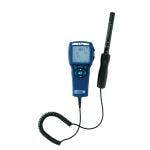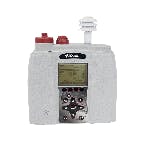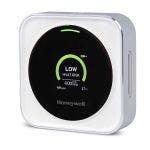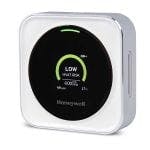
How CO2 Can Affect Your Health and Productivity at Work and What You Can Do About It

Carbon dioxide (CO2) is a gas naturally present in the air at a concentration of about 0.037%. It is not harmful to health at low concentrations, but at high levels, it can become toxic or asphyxiate workers by pushing oxygen out of the workspace. As workers breathe in higher concentrations of CO2, they may experience symptoms such as headache, dizziness, confusion, or loss of consciousness. High CO2 levels can also impair cognitive functions, such as decision-making, reaction time, and thinking processes, which can also impact the productivity and well-being of workers. In this blog, we will explain the sources and effects of CO2 in the workplace, how to measure and monitor CO2 levels, and what actions you can take to improve ventilation and prevent CO2 exposure.
What Are the Sources of CO2 in the Workplace?

One of the primary sources of CO2 in indoor workspaces is the human respiratory system. As we breathe, we exhale CO2, and if the ventilation in the workspace is inadequate, the CO2 can accumulate to dangerous levels. Other sources of CO2 in indoor spaces include combustion processes (e.g., gas stoves or heaters), smoking, decomposition of organic waste, and poor ventilation.
Some workplaces may have higher CO2 levels than others due to the nature of their work, such as:
- Breweries and Wineries
- Bakeries or food processing plants
- Classrooms
- Public transport
What Are the Dangers of Exposure and Workplace Exposure Limits (WELs)?
The effects of CO2 exposure depend on the concentration and duration of exposure. According to the Health and Safety Executive (HSE), the workplace exposure limits (WELs) for CO2 are:
- Long-term exposure limit (8-hour reference period) of 5000 ppm
- Short-term exposure limit (15-minute reference period) of 15000 ppm
Exposure to CO2 above these limits can cause various symptoms, such as:
- 5000 ppm: Increased breathing rate and slight discomfort
- 10000 ppm: Headache, drowsiness, and poor concentration
- 20000 ppm: Increased heart rate and nausea
- 40000 ppm: Dizziness and confusion
- 50000 ppm: Loss of consciousness
- 100000 ppm: Death
However, many experts suggest that levels should be kept below 1,000 ppm to ensure optimal air quality and avoid health effects or reduced productivity due to tiredness.

How to Measure and Monitor CO2 Levels?
One way to monitor the ventilation rate and identify poor ventilation is to use portable Carbon Dioxide (CO2) monitors. CO2 monitors can help estimate airflow rates and alert when CO2 levels exceed a certain threshold. We have a few tips on the best practice for monitoring CO2 levels in office spaces:
- Place the monitor at head height and away from windows, doors, and people
- Try several monitoring locations to find the best location for monitoring
- Take multiple measurements throughout the day at regular intervals, mainly when the room is occupied
- Compare readings against the WELs and take any required action
CO2 monitors are not the end solution for poor ventilation. They are only used in this situation for assessing and helping monitor improvements. By keeping your workplace well-ventilated and monitoring your CO2 levels regularly, you can protect workers from the dangers of high CO2 levels and enhance safety and performance.
Check out some of our highly recommended CO2 monitors below.










